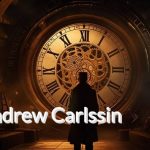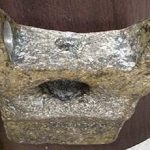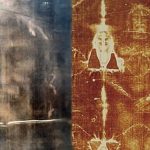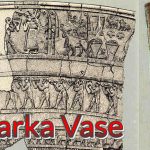The disappearance of the Roanoke Colony has long been one of the oldest unsolved mysteries in the United States, dating back to 1587. At that time, Sir Walter Raleigh sponsored John White to establish a British colony near the coast of North Carolina on Roanoke Island. This prosperous colony, consisting of 115 individuals, successfully landed in July of that year and achieved initial success in a short period. Meanwhile, the leader of the colony, John White’s daughter, Eleanor Dare, gave birth to a daughter named Virginia Dare, the first English child born in the Americas.
However, White had to return to England to obtain fresh supplies, and his return was delayed due to the outbreak of the Anglo-Spanish War. Three years later, in 1590, White finally returned to Roanoke, only to be astonished to find the entire colony had vanished without a trace. There were no signs left behind, except for the word “Croatoan” carved on a post and “Cro” on a tree. The meaning of these two markings and the whereabouts of the colony remained a mystery.
In 2020, amateur archaeologist Scott Dawson from Hatteras Island, south of Roanoke, published a book titled “The Lost Colony and Hatteras Island.” In the book, he provided evidence to researchers through The Virginian-Pilot magazine, claiming that the colonists “were never lost,” and “the mystery ends here.” Dawson asserted that the colonists had actually moved to Hatteras Island and assimilated into the local Native American tribe, the Croatoans. Scientists studying the area discovered artifacts indicating a mix of British and Native American craftsmanship, confirming that these two groups had lived together.
Although it appears that this mystery has been solved, the various exploration theories that people have entertained over the years remain intriguing. Here are 16 fascinating theories regarding the disappearance of the Roanoke Colony:
1. The local Native American tribes absorbed these colonists either as friends or slaves.
South of Roanoke, there is an island called Croatoan (now known as Hatteras Island), which is the homeland of a Native American tribe with the same name. Due to the amicable relationship between the immigrants and the tribe, they carved “Croatoan” on the fort’s doorposts. Many believe that the colonists moved to the island and were assimilated into the tribe. As demonstrated in Scott Dawson’s 2020 book “The Lost Colony and Hatteras Island,” this theory seems reliable and solves the mystery.

Previous researchers also considered other possible connections with Native Americans. Some speculate that they migrated north to join the Chesapeake tribe or the Joara people. In the years following the disappearance of the colony, many reported seeing Europeans and European-manufactured goods in the region, although most were rumors. A settler from the Jamestown colony in Virginia, around 1607, drew the Zuniga Map, indicating that there were “four clothed” people from Roanoke living among the Eno tribe. Another Englishman claimed to have seen two-story stone houses at Indian settlements in Peccarcanick and Ochanahoen, allegedly taught by English colonists. Archaeologists at the time found evidence, including a gold signet ring, a fragment of a sword, a slate, and a pencil, which could belong to Roanoke colonists living among the local residents.
It’s also possible that the colonists encountered less friendly Native American residents. William Strachey, the colonial secretary of Jamestown, reported seeing European slaves being forced to work in Native American tribes. To this day, many Native American residents in the region claim European ancestry, but DNA analysis of present-day local families has not provided a definitive conclusion.
2. Colonists: Cannibal Victims or Seen as Hostile by Natives?
In comparison to the amicable relationship with the Croatoan people, other Native American tribes might have harbored a more unfriendly disposition towards the Roanoke colonists. A theory suggests that an unfriendly tribe could have attacked and clashed with the British colonists.
If this scenario holds true, it could potentially explain why no remains of the colonists were discovered. In many local cultures, bones are considered integral components of medicinal remedies, often ground into powder. Although this is a time-consuming process, they may have had sufficient time to complete it. Due to White’s three-year absence, it is challenging to pinpoint when the colonists started disappearing. While there is a lack of compelling evidence indicating cannibalism among the tribes in the region, in 1609, Jamestown colonists did engage in cannibalistic practices. Therefore, it is plausible that the ancestors of these tribes, including the residents of Roanoke, might have been involved in similar activities.

3. Edgar Allan Poe and the Mystical Connection to ‘Croatoan’
The fate of the Roanoke Colony is not the sole mystery: archaeologists and historians still grapple with understanding why the word “Croatoan” was carved on that post. Were the colonists signaling that the Croatoan tribe would know what happened to them?
While we remain uncertain, the term “Croatoan” is connected to another peculiar event centuries later.
Little is known about the circumstances surrounding the death of writer Edgar Allan Poe in 1849. After disappearing during a trip from Virginia to Pennsylvania, Poe suddenly reappeared in a gutter in Baltimore, Maryland, almost incoherent and seemingly unconscious. It is said that in his final moments, Poe muttered the word “Croatoan” in a hushed voice.
Currently, we are unclear about the nature of his illness and the cause of his death, as all medical records and death certificates have been lost. Did Poe also undergo an experience akin to the Lost Colony? The mysteries surrounding his final days persist.
4. “Croatoan” appears at the scenes of many other mysterious disappearances.
This enigmatic word has reportedly surfaced in various contexts. Infamous stagecoach robber Black Bart is said to have carved the word on the cell wall before his release in 1888, after which he vanished from records. In 1913, horror writer Ambrose Bierce went missing in Mexico, and the bed he last slept on supposedly had “Croatoan” carved on a post. In 1921, the ghost ship Carroll A. Deering ran aground at Cape Hatteras without a crew, near what was once Croatoan Island. The word also appears on the last page of the ship’s logbook. Notably, aviator Amelia Earhart, after her disappearance in 1937, wrote down this phrase in a diary found later.
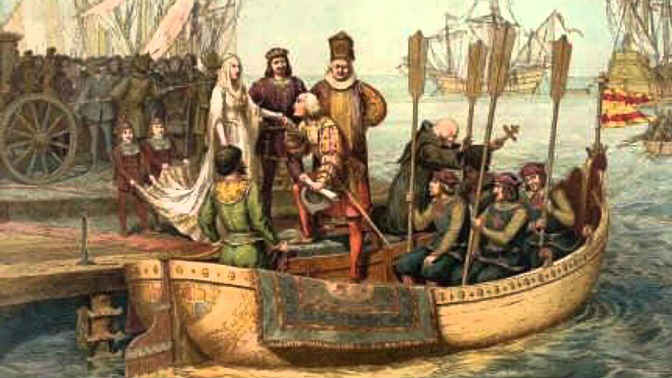
5. Colonists massacred by Chief Powhatan
In 1607, members of the Jamestown colony sought to understand the fate of their ill-fated predecessors. Jamestown’s secretary, William Strachey, claimed that local leader Chief Powhatan confessed to John Smith that his tribe massacred the colony as revenge for an alliance with a rival tribe. Supposedly, Powhatan possessed some items taken from the colonists, including a breech-loading gun and a brass mortar and pestle.
However, historians and anthropologists largely dispute this account, as the sole record of this confession comes from Strachey, and Smith never mentioned it in his own writings.
6. A contagious disease drove the colonists mad.
Based on reports from Native American tribes, who claimed to witness internal conflicts among the Roanoke colonists, archaeologists also speculate that the Roanoke settlers may have been infected with a plague. This disease could have caused patients to experience mental confusion, paranoia, and even complete madness. Those uninfected may have sought to defeat those who were infected, fearing the spread of the virus.

7. Spanish troops killed the colonists.
As the Roanoke Colony vanished, England was at war with Spain, leading some to believe that the disappearance was linked to Spanish involvement. Spain and England were in a hostile relationship over colonial matters in the Americas, and Spanish troops were stationed in Florida at the time. Did Spanish troops reach North Carolina and eradicate the English presence in the region?
8. Colonists attempted to sail back to England.
Some argue that the colonists grew impatient waiting for John White’s return and attempted to sail back to England on their own. However, this theory seems somewhat strained. Historians posit that the colonists were left with only a small boat that could not accommodate everyone. There is also no evidence of a shipwreck to support this theory.
9. Execution of Suspected Witches by the Croatoan Tribe
Reports suggest that the Croatoan tribe believed in the existence of male and female witches practicing dark magic. The tribe may have viewed the actions of the Roanoke colonists, such as spreading diseases and encroaching on native lands, as wicked. While local tribes did not routinely execute witches, they would eliminate perceived dangerous outsiders, making the colonists appear threatening.

10. Roanoke: Ground Zero for a Zombie Outbreak
Another theory, circulated online, posits Roanoke as the epicenter of a zombie apocalypse. This combines with aspects of other theories, suggesting that the colonists, when falling ill, transformed into cannibals. According to this notion, the settlers contracted a zombie virus, fueling an insatiable desire for human flesh, hastening the decay of their own bodies. The bodies disappeared long ago, and the epidemic supposedly ended before White’s return.
11. Roanoke Colonists Transformed into Trees
It’s reported that the Croatoan tribe believed in a spirit on the island with the power to draw criminals into the forest. There, they would be transformed into trees, stones, animals, or any element of nature. If this legend is taken literally, it implies that no one truly went missing; they simply became a part of the land.
12. Forest-Dwelling Reptilian Demons Possessing Colonists
Croatoan legend holds that “greater souls” manifested as elements, and they reported a strange phenomenon coinciding with the disappearance of the colonists. Birds fell from the sky, and a significant number of wildlife died suddenly in areas where locals hunted. The Croatoan people claimed a demon took the form of a reptilian creature, attaching itself to humans and inducing demonic traits like violence and greed. They warned the colonists that the malevolent reptilian spirits had infiltrated the entire region. Once internal strife commenced, they believed the colonists were infected by these creatures, leading them to turn on each other.
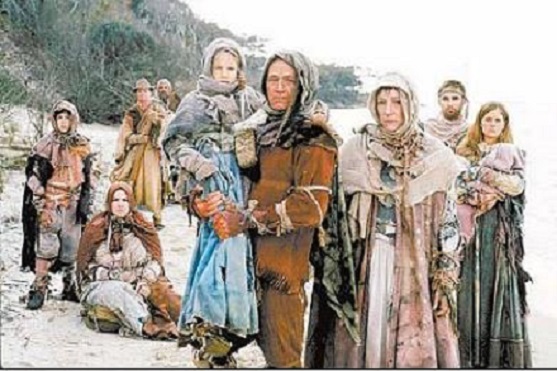
13. Colonists: Victims of North Carolina Witches
If the Croatoan people didn’t perceive the colonists as witches, perhaps the colonists encountered witches awaiting them. Numerous legends speak of witches wandering in the forests of North Carolina, and the arrival of new witches would only add to the lore.
Speculation arises from Native American accounts in North Carolina, recounting stories of witches using dark magic to harm others. Early European colonizers, notorious for accusing indigenous people of witchcraft, may have labeled the natives as witches themselves. Later, colonists began accusing each other of practicing witchcraft, a phenomenon infamous in the Salem witch trials.
14. The Dare Stones: Narrating the Tale of Missing Colonists
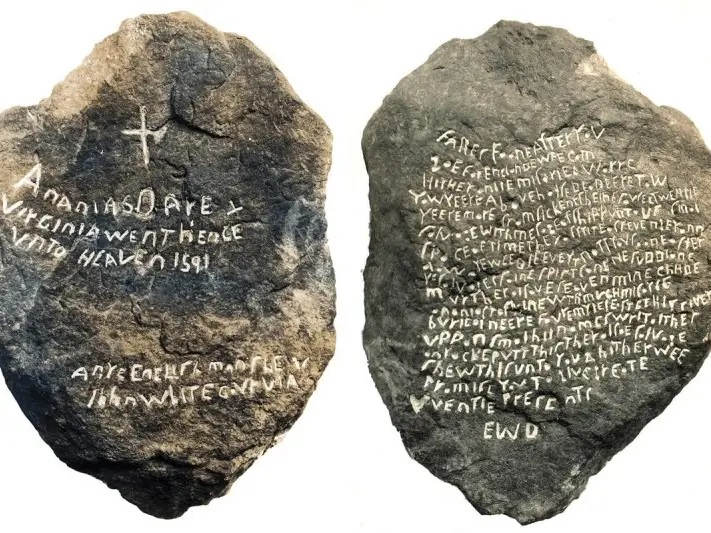
From 1937 to 1941, stones allegedly carved by members of the Roanoke colony began surfacing. A man claimed to find the first 21-pound stone on the coast of Carolina, allegedly inscribed by Eleanor to her father John White. The letter described the torment of diseases, violent clashes with local tribes, and the reduction of colonists to a mere seven survivors shortly after White departed for England.
During the 1930s, a North Carolina farmer produced over 40 carved stones, later proven to be fake. However, the initial stone might hold authenticity.
15. Alien Abduction of the Colonists
When considering alien abductions as a plausible explanation, the mystery takes a highly mysterious turn. Various theories propose extraterrestrial involvement, ranging from relocating the colonists to another world to aliens sending signals, then returning them to Earth from the other side. If they truly disappeared, perhaps they will return to Roanoke centuries later, believing only an hour passed in their perception.
16. Virginia Dare Survived and Became a Beautiful White Doe
Many legends surrounding the Roanoke colony center on Virginia Dare, the first English child born in America and the granddaughter of founder John White. In 1901, Sallie Southall Cotten penned a poem, “The White Doe: the Fate of Virginia Dare,” fictionalizing the girl’s fate. In the poem, Virginia is adopted by a local tribe and renamed Winona-Ska. She receives love and acceptance from the tribe, eventually betrothing a young chief. Unfortunately, an evil sorcerer targets her, transforming her into a beautiful white doe when she refuses to marry him.
END:
The disappearance of the Roanoke Colony has always been one of the most mysterious events in history, giving rise to various intriguing theories. From cannibalism, the spread of infectious diseases, alien abductions to black magic, these speculations have added layers of complexity to this historical enigma.
Among these theories, the perspectives suggesting that the Croatoan tribe absorbed the colonists, an epidemic causing internal strife, and extraterrestrial intervention appear relatively plausible. The idea of the Croatoan tribe absorbing the colonists finds support from archaeologists, and the scenario of a disease causing internal conflicts is a plausible one. Extraterrestrial intervention provides an explanation for the peculiar phenomena that people of that era found difficult to comprehend.
Personally, I am inclined to believe in the theory of the Croatoan tribe absorbing the colonists. Considering the amicable relationship between the colonists and the local indigenous people, as well as Scott Dawson’s research, it is plausible that they moved to Hatteras Island and successfully integrated into the local community. This theory is not only supported by on-site archaeological evidence but also explains why no bodies were left when the colony departed.
Although this is just one of many theories, the mystery of the Roanoke Colony remains partially unsolved, leaving behind numerous captivating questions.
More UFOs and mysterious files, please check out our YouTube channel: MysFiles
Lacerta Files: Human beings are the product of genetic engineering by alien civilizations.




